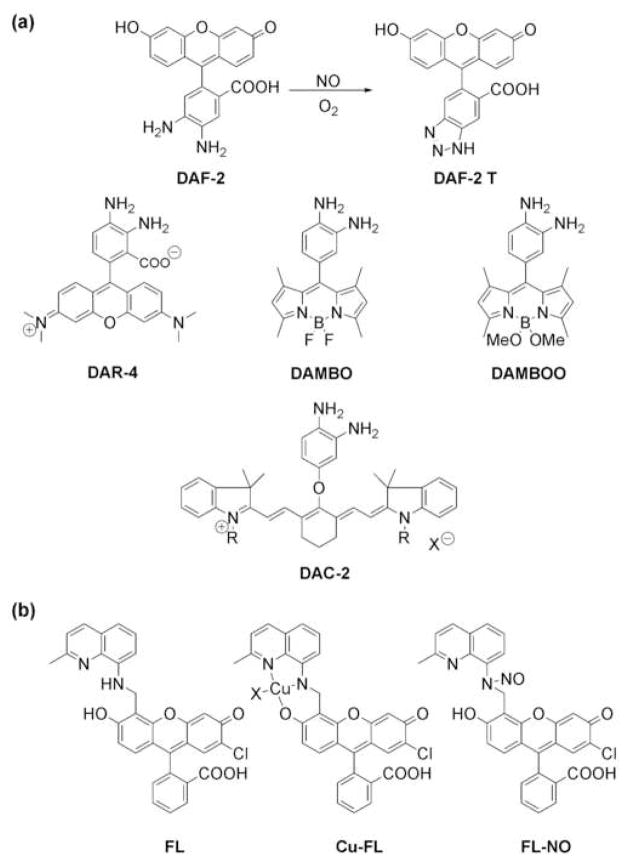Figure 2.
Fluorescent probes for detection of NO. (a) Probes based on the o-phenylenediamine scaffold give highly fluorescent triazole products upon reaction with nitric oxide in the presence of oxygen. Diaminofluorescein-2 (DAF-2), Diaminorhodamine-4 (DAR-4), Diaminobenzene-BODIPY (DAMBO), DAMBO-4,4-diOMe (DAMBOO), and diaminocyanine (DAC) are representative examples using this switch. (b) Cu(II) complexes of fluorescein derivatives, such as Cu-FL, allow for the direct detection of NO by release of the highly fluorescent nitrosylated FL ligand (FL-NO) upon reduction of Cu(II).

